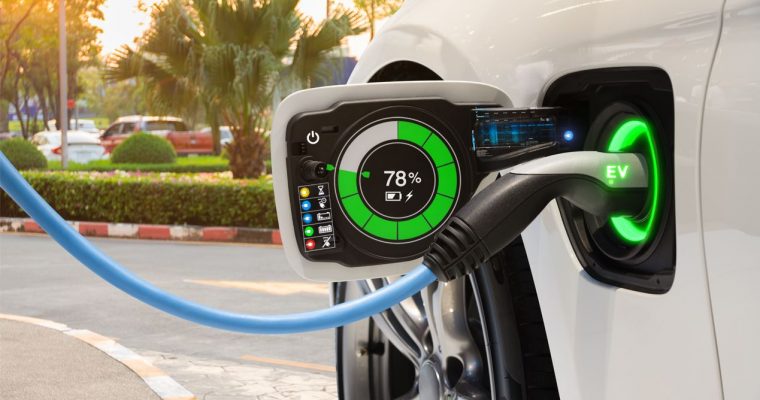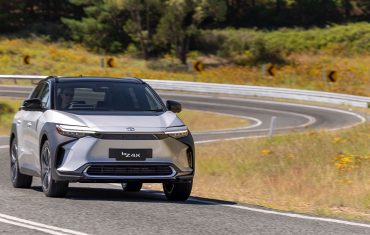
The EV charging conundrum
For driversBy Andrew Maclean
The chicken or the egg? That age-old question has stumped philosophers and scientists since the birth of time.
And now, it is playing a similar role in the evolution of our motoring future.
As the automotive industry slowly pivots towards zero emissions vehicles, the popularity of battery electric-powered vehicles has been dictated by two factors; the availability of EVs and the ability to recharge them conveniently.
For anyone looking at the transition to electric cars – whether you’re an individual or a business fleet manager – it is not a question of what comes first, the cars or the infrastructure, but rather a necessity that both exist at the same time.
So, as we’ve covered in detail the ever-growing catalogue of electric vehicles coming to Australia in the next few years, let’s look at how the charging infrastructure has developed so far and, as demand increases, what it will look like in the near future to ensure a seamless shift to electric vehicles.
How to recharge an Electric Vehicle?
First of all, unlike conventional vehicles with an internal combustion engine that can only be refuelled at commercially operated petrol stations, there are myriad of options to replenish the battery pack in an electric vehicle. In fact, they can be recharged anywhere there is electricity; at home, the office, from public charging stations and, in an emergency, even the bakery out the back of Bourke (if you ask nicely, and presumably buy a loaf of bread or two).
Each solution, however, presents unique opportunities and compromises.
For starters, like the volume of a petrol tank, the size of a battery pack (how much energy it can hold – measured in kilowatt hours [KWh]) and the power of its on-board inverter (how much energy it can ingest) will determine the time it takes to recharge. In any case, the larger the battery, the longer it will take.
Secondly, the flow of electricity differs across each charging option, which further dictates the speed at which the vehicle can recharge.
A 240V AC household power outlet is the most restrictive and can deliver around 2.3kW of energy. In this situation, it would take more than a day to fully recharge an EV that is equipped with a 60kWh battery.
A higher voltage wallbox charger is the most convenient – and recommended – option for households and small business operators with dedicated parking spaces. This can increase the flow of electricity to between 7kW and 22kW, which drastically reduces the time it takes to recharge.
Lastly, there is the ever-growing network of public charging stations that are being installed across the country. These vary in voltage from 22kW AC chargers – similar to the fastest wallbox – and 50kW DC ‘fast’ chargers to the most powerful 350kW ‘ultra rapid’ chargers that can replenish a large battery pack to 80 percent capacity in less than 15 minutes.
Public charging network; today and tomorrow
Australia has been relatively slow to build a wide-scale network of public charging stations that encourages a greater uptake of electric vehicles.
According to the Electric Vehicle Council, there are currently more than 3000 public charging stations operating around the country with less than one in six being DC fast, rapid or ultra-rapid chargers.
A report by Statista claims that in 2021, NSW had the most public charging stations with 1017, followed by Victoria (722), Queensland (486), Western Australia (305), South Australia (283), Tasmania (100), the ACT (58) and the Northern Territory (31).
Of those, NSW had the highest number of DC charging stations (181), followed by Victoria (115), Queensland (84), Western Australia (33), South Australia (27), Tasmania (18), the ACT (10) and the Northern Territory (2).
But the recently elected Labor Government has outlined plans to significantly improve Australia’s charging network over the next five years as part of its National Electric Vehicle Strategy.
A discussion paper is set to be tabled for consultation later in 2022 among government, relevant industries and the private sector on the development of a national EV charging network with charging stations located at an average interval of 150km on major Australian roads.
On top of that, individual state governments have committed significant funding towards improving the charging network.
The NSW State Government has already earmarked $149 million to fund ultra-rapid 350kW DC charging stations across the state and $20 million for chargers at regional businesses and tourist locations.
Earlier this year, it announced an additional $38 million towards its Electric Vehicle Strategy in the 2022-23 budget, with a further $18 million in grants to fund new fast-charging stations as well as expand the number of outlets at existing stations in high-density urban areas from four to at least eight charging points.
The remaining $20 million has been split between co-funding 500 kerbside residential charging points in areas where private off-street parking is limited and co-funding 125 charging stations in medium and large apartment buildings with more than 100 parking spaces.
In Victoria, the state government has outlined a $100 million plan to support its Zero Emissions Vehicle Roadmap that includes an additional $19 million to accelerate the roll-out of electric vehicle charging infrastructure across regional Victoria with 141 fast charging stations located in 116 ‘high-use’ areas and tourist hot spots.
Queensland was an early investor in charging infrastructure, helping to develop the Electric Super Highway that allowed EV owners to travel the entire distance of its eastern seaboard. It recently announced funding for what it dubs Phase 3 that will see the installation of an additional 24 charging stations, including inland regional locations.
Not to be outdone, the Western Australian government has announced $21 million in funding to develop the world’s longest electric vehicle charging highway with the installation of 49 locations across the state that will allow EV users to travel from Perth to Kununurra in the Kimberleys, along the south-west coast to Esperance, and east into the Goldfields to Kalgoorlie.
In South Australia, the government has provided the RAA with a $12.35 million grant to build and operate a network that will consist of more than 530 chargers across 140 stations in 50 rural, regional, and metropolitan locations.
In Tasmania, the NRMA recently boosted its funding to the Electric Highway Tasmania – a privately-owned group run by electric vehicle advocates – to expand its reach from the existing six sites to 27 sites by mid-2023, meaning that EV owners, even in the most remote locations, would be no further than 100km away from a charging station.
The ACT Government announced earlier this year it has issued $1.4million in grants to providers that will deliver an additional 77 charging stations by the end of 2023 with a target of having at least 180 public charging stations in operation by 2025.
The Northern Territory has its own unique challenges and is helping to fund EV owners to install EV charging infrastructure at home by subsiding the installation of wallbox chargers.
On top of the government investment in electric vehicle charging infrastructure, there are also a number of private enterprise initiatives that will further improve the availability of electric vehicle charging.
Both Ampol and BP have announced plans to introduce electric vehicle charging stations at service stations across Australia, with the former already operating five pilot sites as part of a trial before it expands the roll-out to more than 120 sites by the end of next year.
So, no matter where you live in Australia the ability to drive an electric car whenever – and wherever – will soon be as seamless as it is today with a petrol-powered vehicle.
Will the network charge all EVs?
Because cars with internal combustion engines are suited to different fuels – regular, super and premium unleaded or diesel – it’s the reason there is a variety of fuel hoses at the bowser.
With battery-powered cars, there is only one source of power: electricity. But that doesn’t mean that all EVs are built the same when it comes to how they can be charged.
At the moment, there are a number of different plug types that connect a charger to the vehicle, and there is no official standard for either – yet.
Early model EVs, such as the original Nissan Leaf and the Mitsubishi iMiev have a Type 1 (J1772) connector that only allows for AC charging up to 7.2kW, and there are very few charging stations with this plug type across the country.
The most common are Type 2 CCS and CHAdeMo connectors, and Tesla’s proprietary Supercharger network.
The Type 2 CCS plug is widely used by European car makers and features a seven-pin top connector for AC charging with a separate two-pin port for DC charging, while the CHAdeMO connector is predominantly used by Japanese manufacturers and exclusively for DC charging with bi-directional capabilities, which means it can feed electricity from the battery back into the grid.
Tesla has developed a variation of the Type 2 CCS plug that means its vehicles can be charged from any relevant public charging station but locks other models out from its dedicated Superchargers.
The majority of 50kW+ DC chargers already in operation around Australia feature both Type 2 CCS and CHAdeMo connectors, but newer stations are moving to just offering Type 2 CCS plugs as there are only a handful of vehicles from Japan that utilise the latter.
You can check the location and connector type for all charging stations using the community-based smartphone app Plugshare.
How do you plan adding charging to the workplace?
Keeping your business mobile is critical to its effectiveness, and the same principle obviously applies to your fleet of vehicles.
Electric cars are an efficient solution in more ways than one, especially if you install charging infrastructure in the workplace, as they can allow your business can have greater control on energy usage as well as be more productive on the road without the need to stop at service stations.
If you are considering the transition to electric motoring in the future, it could pay dividends to install a collection of EV charging stations or wallbox chargers within the parking lot.
If the business owns the property, this could be seen as an investment that will increase its future value and should be combined with solar panels and battery storage that would reduce its carbon footprint and energy bills.
At the top of the range, installing a Level 3 DC fast charging can be quite expensive with an individual station costing between $40,000-$100,000, plus an additional $15,000-plus for installation that covers off the requirement for a 480V transformer, upgrades to the electrical supply, permits and labour costs.
Lower voltage AC chargers are much more affordable and easier to install, with the hardware costing around $3000 for a dual-socket Type 2 charger plus approximately $5000 for labour costs, depending on the distance between the location of the charger and the electrical breaker box, whether it requires ethernet or 4G connectivity to monitor energy usage and if any trenching is required for an open-air carpark.
If your business leases the property or operates from an office tower, discuss the option of the owners investing – or co-investing – in the installation of EV charging.
How do you plan adding charging at home?
It’s a similar, but far less complicated, scenario to install EV charging infrastructure at home.
Most EV manufacturers offer an optional Level 2 wallbox charger with the purchase of the car that needs to be installed by a qualified electrician.
A basic one of these can be installed against the house in the driveway or in the garage and increases the flow of electricity from 2.3kW to 7kW, which can fully charge an EV overnight.
If you garage has three-phase power, a higher voltage unit can provide up to 22kW which reduces charging times significantly.
A typical wallbox costs between $2000-$3000 including an electrician’s fees and will generally take about one hour to install.
At the end of the day, the answer to the chicken and the egg question is moot, because the growing coop of electric cars are being hatched and the charging infrastructure required to use them is being laid at exactly the same time.
If you’re considering the transition to electric motoring, contact SG Fleet today for all the expert help you need.
 Driving Insights
Driving Insights



